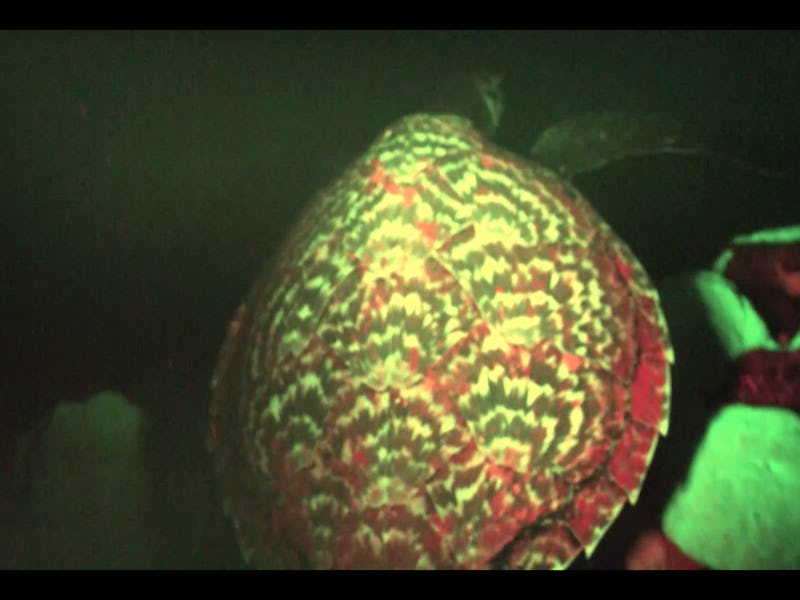Say Hello to the Glow-in-the-Dark Turtle
The world’s first biofluorescent reptile looks pretty freakin’ amazing

It’s incredible how much humans still have yet to discover in the ocean.
David Gruber, a National Geographic Emerging Explorer, learned this first-hand when he was filming coral nearby the Solomon Islands, and ran into what he called a “bright red-and-green spaceship.” Could it be an alien UFO? Underwater?
Actually, it’s something arguably cooler — the critically endangered hawksbill sea turtle, showing off a green and red biofluorescent glow while swimming around in the water.
“I’ve been [studying turtles] for a long time and I don’t think anyone’s ever seen this,” Alexander Gaos, director of the Eastern Pacific Hawksbill Initiative, told National Geographic.
Biofluorescence has been observed in quite the variety of fish, sharks, rays, and mantis shrimp. But it’s taken researchers by surprise to find it happening in an marine reptile species.
(A quick note: biofluorescence differs from bioluminescence. The latter is where animals produce their own radiant light through chemical reactions at the cellular level, while fluorescence is simply the reflection of oncoming blue light as a different color.
Gruber, a marine biologist from the City University of New York, was in the area last July to film biofluorescence in sharks and coral reefs. During a night dive to take some footage, he all of a sudden saw a neon green and red thing just humbling along into his view.
Later on, Gruber talked to some locals who showed off several captive hawksbill that also demonstrated a red biofluorescent glow.
Scientists have no idea how or why these turtles can biofluoresce — usually used as a method of attracting prey or communicating with others in the same species. It might be a camouflage mechanism meant to allow the turtles to hide along with the biofluorescent coral. Much more research will be needed on these very mysterious animals. Hopefully this discovery prompts a greater conservation effort to protect and rehabilitate the dwindling hawksbill numbers.